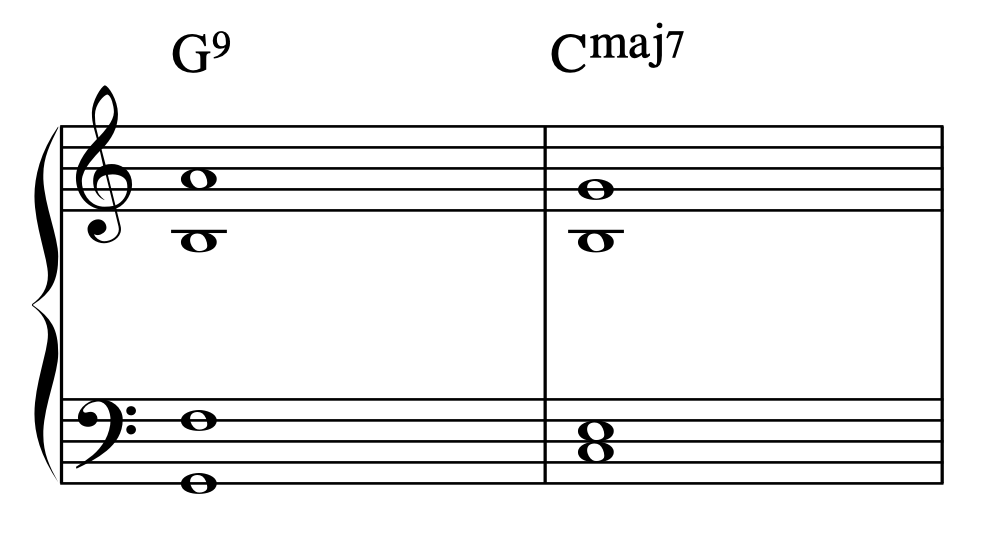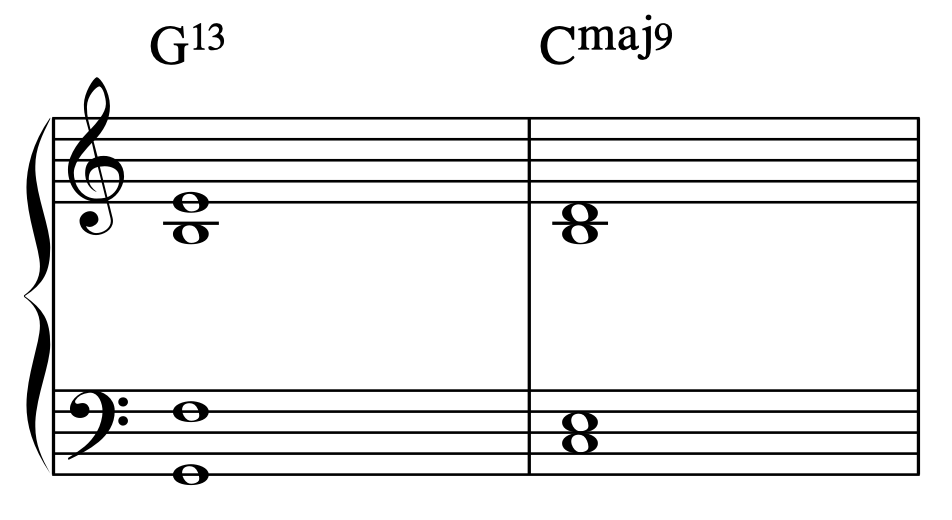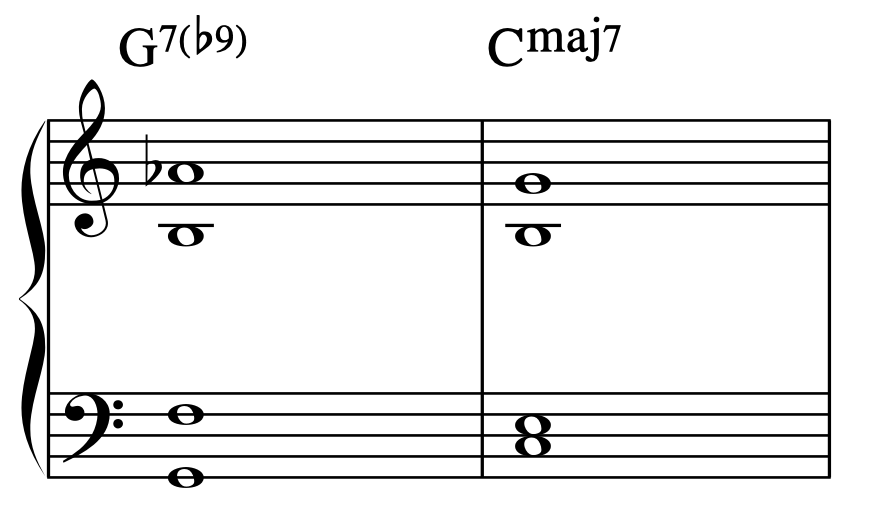Jazz basics 3: the dominant 7 chord in jazz
Why is the dominant 7 chord in jazz so important? To answer this question I will first separate this chord into two categories: moving and static.
Moving
This applies generally to any classical harmony but when this dominant 7 chord in jazz is moving towards its resolution it can be thought of as a tension chord. To increase this tension we can add notes that don’t belong to the chord. These notes can be extensions or alterations.
There are 3 extensions: notes 9, 11 and 13.
There are 4 alterations: notes b9, #9, #11, b13.
In a G7 chord these 3 extensions are A, C and E.
In a G7 chord these 4 alterations are Ab, A#, C# and Eb.
Here are four examples of the G7 chord moving to Cmaj7 with 9 (extension), b9 and #9 (alterations).




And here’s how these four progressions sound.
Static
A dominant 7 chord in jazz is static when it stands in its own right rather than pointing to its tonic. An example is in a basic 12 bar blues sequence. Here are the first 4 bars in F.
